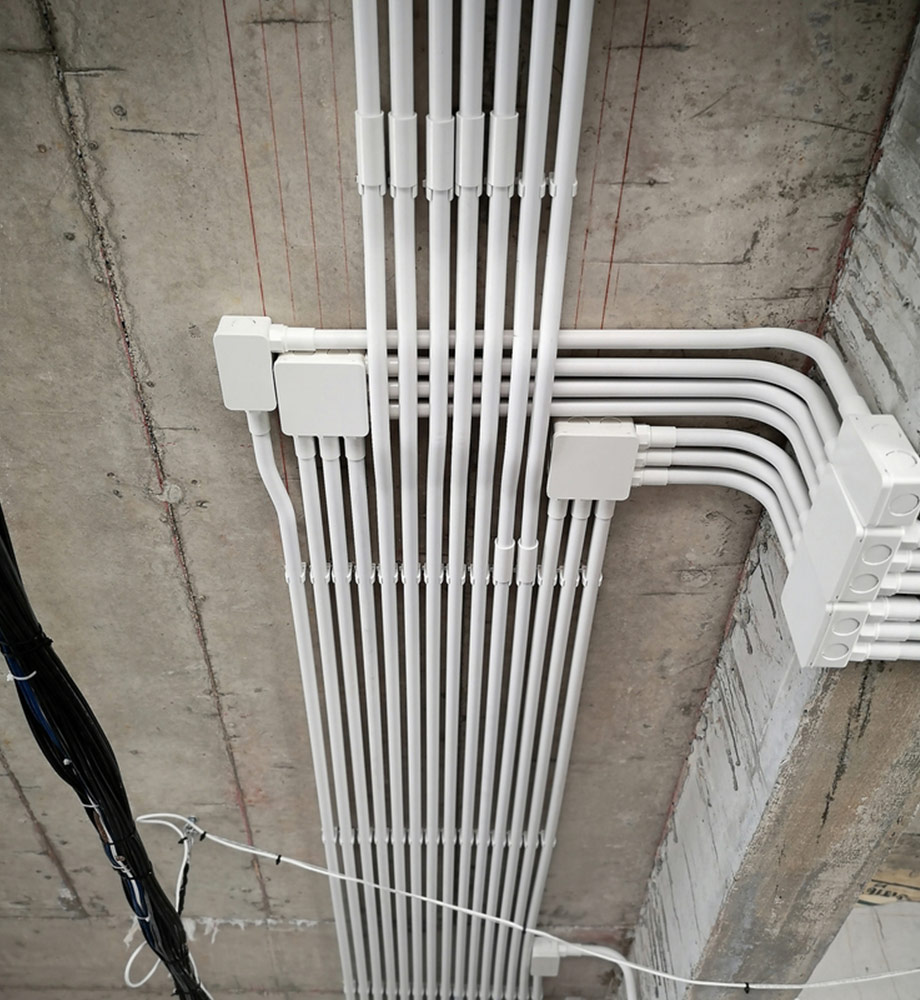Key Features
- Corrosion & Rust Proof: Nonmetallic PVC material resists chemicals, salt air, and water exposure.
- Sunlight Resistant: UV inhibitors allow safe sunlight exposure without brittleness.
- UL/NEMA Certified: Meets UL 651 and NEMA TC-2 standards; generally 90°C rated for hot wires.
- Schedule 40/80 Options: Standard (40) or heavy-duty (80) wall thickness for different mechanical strength requirements.
- Easy Installation: Light enough to handle manually; solvent weld or threaded fittings are used for connections.
Benefits
- Low Maintenance: Unlike metal conduits, PVC never needs painting or rust-proofing.
- Cost Savings: Generally lower material and labor cost than metal; no need for grounding of conduit.
- High Insulation: Smooth inner surface reduces wire friction; PVC is insulating for electrical safety.
- Longevity: Designed for 25+ years of life in harsh environments, per industry standards.
Applications
- Commercial & Residential Wiring: Raceway for electrical branch circuits in walls, ceilings, and buried applications.
- Industrial Facilities: Cable routing for factory automation, control systems, and MCCs (in clean areas).
- Data and Telecom: Protecting fiber-optic and network cables outdoors or between buildings.
- Solar & Renewable Energy: Conduit runs for PV system wiring, battery enclosures.
Technical Specifications
- Standards: Conforms to UL 651, CSA C22.2 No. 211.2, NEMA TC-2.
- Temperature Rating: Usually –20°C to +60°C for normal PVC (higher temps for PVC-O or CPVC).
- Lengths & Sizes: Common lengths are 10-foot sections; diameters from ½″ to 4″ (and larger for Schedule 40/80).
- Color: Typically gray for electrical (other colors for other uses, e.g. white, yellow).
Unique Selling Points (USPs)
- Proven Durability: Widely used for decades with demonstrated UV and chemical stability.
- Ease of Use: No special tools needed (vs. threading metal); cuts with basic saws and glues.
- UL-Listed Quality: Ensures compatibility with electrical codes and safety requirements.

